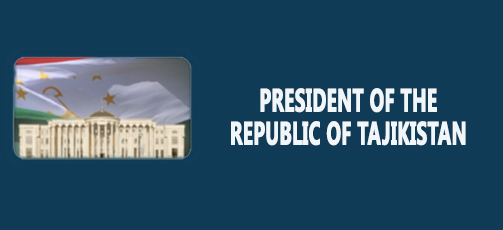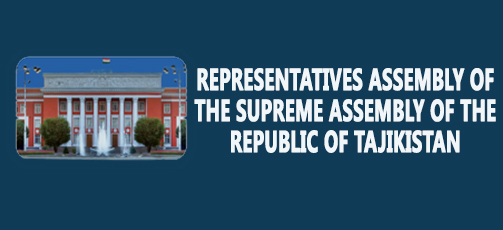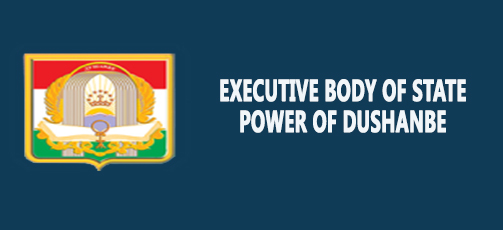President Emomali Rahmon Meets Leaders and Public Representatives of GBAO
Read also

DUSHANBE, 22.08.2020. (NIAT Khovar) – The Founder of Peace and National Unity, Leader of the Nation, President of Tajikistan Emomali Rahmon held a meeting with leaders and public representatives of the Gorno-Badakhshan Autonomous Oblast (GBAO). The meeting took place in the Administrative centre of GBAO — Khorugh city. The socio-economic development in the region was the main item on the agenda.
The discussion also focused upcoming celebration of the 30th anniversary of the state independence of the Republic of Tajikistan
President of Tajikistan Emomali Rahmon:
Distinguished Compatriots,
Ladies and Gentlemen,
During several days of my working visit to the Badakhshon Mountainous Autonomous Province, I got convinced that the region has noticeably improved, and the standard of living of the population is steadily improving thanks to the continuous efforts made by the state and the Government of the country, dedicated work and patriotic efforts of local residents endowed with a sense of high pride with their homeland.
With a specific aim of ensuring the development and prosperity of the region, we declared the 21st century the century of development of Badakhshon, and entitled this paradise-like land as the golden gates of Tajikistan, and we are materializing our intentions with hundreds of creative plans and programs.
To ensure sustainable socio-economic development of cities and districts in the Badakhshon Mountainous Autonomous Province during the period of independence, we channeled more than 18 billion Tajik Somoni from funding sources. In 2019 alone and within six months of this year, more than 705 million Tajik Somoni were allocated from the national budget for the creation of social facilities, repair and reconstruction of roads and bridges, construction work and landscaping, social protection of the population and financial support of the region.
During the period of independence, 31 public investment projects worth more than three billion Tajik Somoni were implemented in the region, now 11 other projects for a total of 3.3 billion Tajik Somoni are under implementation.
At the same time, I have to note that within the programs for socio-economic development of the region, there were plans to implement 1345 projects in various fields during 2016-2020 for a total amount of more than 6.5 billion Tajik Somoni, and over the past four years 447 projects worth more than two billion Tajik somoni have been fully implemented.
Currently, 259 projects worth 400 million Tajik Somoni are under implementation in the region, and we will continue implementing similar initiatives onwards as well.
In this regard, I would like to emphasize that in order to achieve the national development goals, the executives of the Badakhshon Mountainous Autonomous Province, its cities and districts should feel higher sense of responsibility for ensuring the implementation of plans for socio-economic development and investment encouragement in line with the prospect goals.
Despite the influence of negative external factors and risks in the context of the spread of COVID-19, the Government is taking all possible actions to reduce their impact on the national economy. In particular, significant efforts are made to seek sources of funding for country’s socio-economic sector, including for the Badakhshon Mountainous Autonomous Province.
In 2019, the national budget allocated 186 million Tajik Somoni to cover the regional budget expenditures, and in 6 months of 2020 alone 89 million Tajik Somoni of financial aid was provided, which is more than 65% of the total expenses of the region’s executive authorities.
Between 1992 and 2020 the national budget allocated 1.7 billion Tajik Somoni only for support of the regional budget. During the period of independence, 2,030 facilities with the total amount of 3.1 billion Tajik Somoni have been built and renovated in the region. In 2019 alone, 202 socio-economic facilities worth 380 million Tajik Somoni were built and commissioned; currently, construction activities continue on 506 facilities worth more than 1.5 billion Tajik Somoni. In this regard, the leadership of the region, the relevant ministries and agencies, the Directorate for the construction of government facilities and other specialized institutions are mandated to complete the construction of the targeted facilities with a high quality and commission them on schedule.
The heads of the region’s executive authorities, its cities and districts need to seriously strengthen cooperation with domestic and foreign entrepreneurs and investors for the construction and commissioning of various social and economic facilities, especially the establishment of production workshops and enterprises, creation of new jobs and the efficient use of resources.
Though the fiscal revenue target for the region’s budget for the first 6 months of 2020, including social tax, is reached by 104.4 percent, it is necessary to take decisive measures to reduce the amount of tax arrears, which amounted to 2.1 million Tajik Somoni by the beginning of July of this year.
At the same time, the Ministry of Finance and the executive authorities of the province, as well as cities and districts in this region are mandated to ensure timely funding of social spheres, support to vulnerable groups and payment of pensions and allowances.
Also, the ministries of finance, health and social protection of the population, the Tax Committee, the Agency for Social Insurance and Pensions, the Executive Authorities of Badakhshon Mountainous Autonomous Province and other relevant institutions and agencies should take all necessary measures for the strict implementation of the Presidential Decree on the prevention of the impact of COVID-19 infectious desease on the socio-economic spheres of the Republic of Tajikistan issued on June 5, 2020.
With the spread of the infectious disease of COVID-19, it is necessary to utilize all resources and opportunities to foster the economic activity of the population, especially in remote mountainous areas. In particular, access to credit at relatively low interest rates will boost entrepreneurship, efficient land use and increased services.
In recent years, the situation in the region with the issuance of microcredits by banks and credit institutions has improved; over the past ten years, 96 000 legal entities and individuals have received loans worth more than one billion Tajik Somoni. In the last 6 months of 2020 alone, 14 million Tajik Somoni of loans were issued to residents of Khorog, which is 22 percent more than it was in this period of last year.
The Entrepreneurship Support Fund of the Government of the Republic of Tajikistan provided concessional loans in the amount of 13 million Tajik Somoni in support of 29 business projects of economic entities in the region, mainly small and medium enterprises engaged in the processing of local raw materials and the production of final products. As a result, business entities of the region have created about 700 jobs.
While before the independence only 5 branches of banks operated in Badakhshon Mountainous Autonomous Province, nowadays the population and business entities are served by 22 bank branches, 3 microfinance institutions, 2 branches of microfinance institutions and 51 banking service centers.
The National Bank, State Bank of ‘Amonatbonk’, commercial banks and other credit institutions need to take concrete measures to scale up their banking services and soft loans in order to develop industrial entrepreneurship, especially taking into account the region’s capabilities in terms of processing local raw materials, establishing industrial and service clusters.
The newly established bank «Sanoatsodirotbank» (within the Entrepreneurship Support Fund) needs to increase its loan portfolio in order to support small and medium industrial projects of entrepreneurs, especially women in the region.
I would like to emphasize that the leaders of the region, its cities and districts together with the relevant ministries and departments, need to regularly take measures towards the development of industrial entrepreneurship.
It is important to bear in mind that the region has great opportunities and resources for the further development of production and the creation of new jobs.
In 2011, the region manufactured industrial products amounting to 55 million Tajik Somoni in total, and this indicator increased 4.3 times compared to 2019 and reached 238 million Tajik Somoni. However, the volume of production during the six months of this year amounted to 70 million Tajik Somoni, which is 11% less compared to the same period of the last year, and this situation requires urgent action.
Badakhshon Mountainous Autonomous Province has ample opportunities for production, especially agricultural products and processing of raw materials, the effective use of such opportunities requires high sense of responsibility, professionalism and high organizational skills.
In this regard, the Ministry of Industry and Innovative Technologies, the State Committee for Investments and State Property Management, the heads of the province, its cities and districts, the relevant ministries and agencies are mandated to undertake further actions to encourage domestic and foreign investment to create manufacturing enterprises, especially for processing of local raw materials and production of construction materials, including marble, fruits, medicinal herbs, and the production of essential goods.
The State and the Government’s efforts resulted in accomplishing significant activities to fully provide the population, enterprises and institutions with electricity. During the period of independence of the country, in order to further increase the generation of electricity in the region, 29 megawatts of new hydropower capacities were commissioned, including the Pomir-1 hydropower plant with the capacity of 28 megawatts, and the existing capacities of 12.9 megawatts were restored.
To provide the region with electricity 24/7, along with the repair and reconstruction of low-voltage power lines, during this period, more than 380 kilometers of high-voltage power lines of 10, 35 and 110 kilovolts and 29 power substations were constructed and reconstructed. These measures, for the implementation of which more than two billion Tajik somoni are allocated, made it possible to gradually increase the generation and transmission of electricity and, at the same time, to meet domestic needs, as well as to arrange the export of electricity to the Afghan region of Badakhshon.
In the last five years alone, the hydropower plants of Andarbak with the capacity of 360 kW, and Teharv with the capacity of 400 kilowatts have been modernized, and ‘Tojikiston’ hydropower station with the capacity of 1,500 kilowatts was constructed in the Murghab district for a total of 100 million Tajik Somoni.
In order to create a unified energy grid in the region, the construction of the 35-kV power transmission line of «Vomar — Voznavd» (42 km), the line of «Vanj District Centre — Teharv» (22 km), the line of «Kalaikhumb — Kurgovad» (40 km) and construction of 35 and 110 kV power lines of «Khorog — Andarob» (10 km), «Khorog — Porshnev» (9 km), hydropower plant of «Pamir-1 — Khorog» (22 km) and «Voznavd — Dashti Yazgulom» (33 km) was completed, and nine 35/10 kV substations were repaired and reconstructed.
Three years ago, at a meeting with the residents of the region, I instructed to take measures to conduct feasibility study of Sebzor hydropower plant in Roshtqal’a district and to develop the design of Sanobod hydropower plant.
At present, the technical feasibility study for the 200 MW Sanobod and 11 MW Sebzor hydropower plants, the 110 kV Sebzor – Khorog power transmission line of 110-kV open switchgear are completed, and construction of the Sebzor hydropower plant has begun this year.
More than 550 million Tajik somoni have been allocated to finance the construction of Sebzor hydropower plant, 110kV Sebzor-Khorog power transmission line and 110kV open switchgear. Additionally, a small hydropower plant of «Hatfat» with the capacity of 450 kW was commissioned in the Bartang Valley of Rushon District in October of the last year, and construction activities on the 110kV power transmission line of ‘HPP ‘Khorog’- City of Khorog» and «Porshnev — Buni» with the length of 26 kilometers for a total of about 40 million Tajik Somoni began.
Despite these achievements, there are still some issues in electricity supply of the population in remote mountainous areas of the region. To eliminate these shortcomings, the Government intends to start construction of small power transmission lines in 35 remote mountain villages of the region by using solar collectors, wind turbines, and small hydropower plants this year and connect users to these networks, as well as create 10 and 0.4 kV power lines in 26 other villages and connect them to the central networks of the region. The project cost is estimated at 260 million Tajik Somoni and there are plans to complete it fully within two years.
In addition to this, there are plans to begin activities on the installation of solar collectors with the capacity of 200 kW in Murghab district in the amount of five million Tajik Somoni and feasibility study for the construction of a 110kV power transmission line of «Khorog — Kozidekh» worth 100 million Tajik Somoni in the nearest future. In other words, over the next two years, more than 12 000 residents of the region’s districts (61 villages in Darvoz, Vanj, Rushon, Roshtqal’a, Ishkoshim, Shughnon and Mughob districts) will have regular access to electricity.
In this regard, the Ministry of Energy and Water Resources, the Pamir Energy company and the executive authorities of Badakhshon Mountainous Autonomous Province are mandated to strengthen activities towards the implementation of projects in the energy sector of the region, to take necessary measures for the timely and high-quality completion of works on construction of Sebzor hydropower plant and commission it by the end of 2022.
Distinguished Compatriots!
Agriculture is one of the important areas for the country’s socio-economic development, including in the Badakhshon Mountainous Autonomous Province. According to statistics, as of July 1, 2020, the region’s farmers have sowed crops on an area of 10,500 hectares, which is equal to the same period last year.
In recent years, the yield of the main agricultural crops in the region also tends to decline. In 2019 the grain yield decreased by 0.35 ton, potatoes — by 0.16 ton and vegetables — by 0.145 ton compared to 2018, and the grain yield decreased by 0.92 ton and fruits — by 0.27 ton compared to 2015.
In 2019, the population of selected types of livestock decreased from 12 to 31 percent compared to 2015, and the production of some types of livestock products decreased from 7 to 56 percent.
To implement the program for the development of horticulture and viticulture over the next five years, it is necessary to create 325 hectares of orchards, including 11 ha of intensive gardens and to restore 550 hectares of old orchards. According to statistics, over the past 4 years and 5 months of this year, 199ha of gardens have been created in the region, which makes 61.3 percent of the program.
Only 1.9 hectares are intensive gardens of the total area of the established gardens in Vanj district.
It was planned to create 2.8ha of intensive orchards within five years in the Darvoz District, 5.5ha in the Vanj District and 2.7ha in Rushon District, however, these targets have not been achieved. Also, within five years 79ha of old gardens were rehabilitated, which is only 14% of the target.
And we have this situation at a time, when, taking into account the climate change and global warming, severe droughts, population growth, the state of world markets in recent years, we have been drawing the attention of leaders and specialists in all spheres to the issue of increasing cultivated areas, creating orchards, preserving livestock and increasing production of agricultural products, i.e., the mobilization of all resources and capabilities to protect the country’s food security.
The Ministry of Agriculture, executive authorities of Badakhshon Mountainous Autonomous Province, its cities and districts need to ensure the effective use of irrigated lands, household plots and the implementation of approved plans of action for sowing agricultural crops, as well as growing high-quality seeds of potatoes, vegetables and other crops suitable for climate adaptation of the region.
In this regard, the Academy of Agricultural Sciences needs to significantly strengthen the activities of its branch in the region, including the selection and adaptation of cereals and potatoes to the climate of the region, increasing land productivity and protecting genetic resources.
The current situation in the world and the spread of COVID-19, which along with other negative factors threatens the food security for the entire humanity, urges the country’s farmers, including in the region, to ensure rational use of every inch of land.
Relevant specialists and persons in charge received specific instructions on this issue at an extraordinary meeting of the Government in April of this year and at a working meeting with the leaders and activists of Khatlon Province held in May in Danghara District.
The chairpersons of Badakhshon Mountainous Autonomous Province, its cities and districts have to undertake necessary measures to fulfill the approved plans, assignments and instructions by the Head of State related to increase of sowing areas of crops, irrigation of new lands, effective use of every inch of land, creation of new gardens and storage of food and submit a detailed report on the implementation of these activities to the Executive Office of the President by the end of 2020.
I would like to emphasize once again that one of the main ways to ensure the development of the agricultural sector is to improve the land reclamation, organize the rational and efficient use of existing lands and develop new ones. Over the past 7 years, 386 hectares of land have been introduced into agricultural operation in the region, and activities on irrigation of 500 hectares of new land developed from pastures in Rushon District are ongoing.
During this period, the reclamation state of only 23 hectares of agricultural land in the region improved, which is extremely small and does not meet the requirements.
In this regard, the Ministry of Agriculture, the State Committee for Land Management and Geodesy, the Academy of Agricultural Sciences, the Agency for Land Reclamation and Irrigation are instructed, together with the executive authorities of Badakhshon Mountainous Autonomous Province, its cities and districts, to undertake regular actions to improve the land reclamation, efficient use of water and land and the annual development of new lands. Also, to develop new lands and further ensure the development of the agricultural sector, it is necessary to develop and present a new program.
Currently, there are 45 greenhouses in the region, and farmers of Rushon District are already exporting vegetable crops to the markets, which is the first experience in the region.
The leaders and specialists of the region have to strengthen cooperation with entrepreneurs and investors in terms of greenhouse establishment.
It is also necessary, with the involvement of domestic and foreign entrepreneurs, to undertake measures to develop animal husbandry, including yak, poultry and fish farming, and thereby improve the consumer market supply.
Ladies and Gentlemen!
The Government regularly undertakes actions to improve the region and create social and economic facilities. These days, infrastructure and landscaping activities are steadily continuing in the cities and districts of the region to ensure decent celebration of the 30th anniversary of Tajikistan’s state independence. In accordance with the approved action plan, there are plans to construct 613 jubilee facilities in the region, 38 percent of the plan has been achieved to date and 145 million Tajik Somoni has been spent.
I would like to emphasize that the implementation speed is still unsatisfactory, and managers and responsible persons are required to strengthen and intensify activities in this direction. In this regard, the executive authorities of the Badakhshon Mountainous Autonomous Province, its cities and districts, as well as the relevant ministries and agencies in cooperation with local entrepreneurs and generous philanthropists, need to take necessary actions to build the planned facilities on time at a high quality and in compliance with the architectural requirements.
In addition to the work done so far, through investment of dozens of millions of Tajik Somoni from the public budget initiatives on embankment, water supply of Khorugh city, repair and reconstruction of roads and street lighting of the city have been completed, other areas of the region have been improved, and a number of modern equipped stadiums have been created to ensure the development of sports and promote healthy lifestyle. In Khorugh City alone, 83 million somoni have been allocated within the framework of state investment projects to increase and improve the level and quality of public services and improve sanitation and water supply through the restoration of existing networks, and to date, activities for more than 15 million somoni have been completed.
The Government established a free economic zone in Ishkoshim District in order to create favorable conditions for the development of entrepreneurship and investment, the importation of latest equipment and technology, the creation of new jobs. The public budget allocated more than 10 million Tajik Somoni to create the primary infrastructure of this zone.
The Ministry of Economic Development and Trade together with the leadership of the region and the Ishkoshim District, as well as other relevant agencies of the region, need to undertake actions to mobilize domestic and foreign investments and to launch the Free Economic Zone as soon as possible.
It is our intention to further continue construction, repair and reconstruction activities in all cities and districts of the Badakhshon Mountainous Autonomous Province within the framework of state programs and projects. To achieve this goal, the Government, in accordance with international standards, has been implementing initiatives on creation and reconstruction of thousands of kilometers of highways, most of which pass through the territory of the Badakhshon Mountainous Autonomous Province. Overall, in order to fulfill these plans during the period of independence, 11 public investment projects worth 2.1 billion Tajik Somoni were implemented in the region, within the framework of which more than 373 kilometers of roads and 40 bridges were built.
Currently, four public investment projects on road construction worth 3.2 billion Tajik Somoni are under implementation in the region, and in the near future, a project for the repair and reconstruction of the Kalaikhumb-Vanj highway will begin.
The construction of roads made it possible to increase the volume of freight traffic in the region from 195 000 tons and passenger traffic from 1.2 million passengers in 1992 to 236 000 tons of cargo and 7.2 million passengers in 2019. At the same time, the region continues implementing the project on construction of Kulob — Kalaikhumb highway, Kulob — Shamsiddini Shohin (32 km) and Shkev — Kalaikhumb (26 km) sections for a total amount of almost 1 billion Tajik Somoni, as well as the project «Strengthening vital infrastructure facilities to ensure their resilience to natural hazards» worth 211 million Tajik Somoni, within which 17 bridges will be built and restored.
The Government intends to implement a project on Kalaikhumb-Vanj highway with the length of 93 kilometers with construction of 15 bridges and two tunnels amounting more than 2 billion Tajik Somoni within the next three years.
The spread of the coronavirus pandemic has delayed signing of the relevant documents. Nevertheless, we are firm to begin activities on reconstruction of the highway by the end of this year.
After the commissioning of Kalaikhumb — Vanj section of the road, the regular movement of vehicles, including trucks, the distance and transportation of goods and consumer products along this complex route in the Badakhshon Mountainous Autonomous Province will become easier and shorter.
Along with the implementation of public investment projects, the budgetary funds allocated for the repair and maintenance of highways in the region is increasing every year, during 1993-2020, and 194 million Tajik Somoni were channeled for these purposes.
During this period, the number of machinery for the maintenance of roads in the region, including 84 units of modern technology and equipment purchased within the framework of public investment projects, reached 227. However, there are still many problems in the area of road reconstruction in the region that require immediate response. For example, in the city of Khorog, passenger and freight transport moves directly through the central street, which disrupts the peace and movement of citizens, and at the same time damages the environment. In order to address this issue, we laid the foundation stone for a transport bridge across the Gund River yesterday.
I would like to recall that the special attention paid by the Government to development of the road and transport sector over the past 20 years, transformed the previous isolated Badakhshon Mountainous Autonomous Province into an international transit point.
In 2019 and the first 6 months of 2020, more than 170 000 tons and 6000 tons of goods and products were imported and exported respectively through the transit points of Kizil-Art, Kulma and six bridges over the Pyanj River.
The implementation of this strategic goal, which, undoubtedly, is one of the great achievements of the period of independence of the country, gave a serious impetus to the development of the country’s economy, including the Badakhshon Mountainous Autonomous Province, the creation of thousands of new jobs, the development of tourism and services, and improvement of the level and the quality of life of the population.
Ladies and Gentlemen!
During the period of independence, 180 new buildings of educational institutions with 25 000 seats for a total of 302 million Tajik Somoni were built and put into operation in the cities and districts of the region. Especially in recent years, as a result of actions taken by the Government, conditions for education and upbringing have significantly improved, the physical infrastructure of educational institutions has been significantly strengthened, and the schools previously located in private houses and carriages have been transferred to new modern buildings.
This year alone, it is envisaged to spend 112 million Tajik Somoni for the education sector in the region, in addition to this, within the framework of public investment projects, activities on construction, renovation and reconstruction have been completed in five educational facilities, and they are ongoing in two other facilities.
In particular, we completed the renovation and reconstruction of the adult education center in Vanj District, the technical and vocational lyceum in Shughnon District, construction of the building of Regional Education Department in Khorugh City and the construction of an educational institution in the village of Patkunob in Darvoz District, construction of a secondary school for 340 seats in the rural jamoat of Saghirdasht, Darvoz District and a preschool facility in Vanj District, worth about 9 million Tajik Somoni. Also, within the framework of my business trip, one secondary school and education departments of Rushon district with the cost of 24 million Tajik Somoni were commissioned.
As a part of my working trip to Darvoz District, we laid the foundation stone for the Presidential School.
Also, the project «Higher Education Development» allocated small grant to Moyonsho Nazarshoev Khorugh State University to strengthen the capacity of its personnel, organize academic courses, improve the qualifications of teachers, renovate laboratories, their equipment and supply with teaching aids.
With a view to educating young talents, we established a Presidential school for gifted children in the city of Khorugh, a republican boarding school for orphans and children from low-income families in Rushon District, where the best conditions for education and upbringing have been created.
At present, 21 preschool institutions and 146 child development centers operate in the region serving for the development of the intellectual capabilities of children.
During 2016-2020, i.e., over the past 5 years, about 800 Presidential quotas were allocated for school graduates in the region, including more than 400 lots for girls to pursue their study in higher education institutions.
While in 2017 12 additional lots were allocated for graduates of educational institutions of the region, and in 2019 — 70, in 2020 — 123 lots were granted additionally.
During the period of state independence, about 35 000, and in the 2019-2020 academic year, almost 4 000 boys and girls from the Badakhshon Mountainous Autonomous Province graduated from the country’s higher educational institutions. Currently, more than 8 000 children from the region study in these institutions. Also, within 29 years, about 4 000 young men and women from the region were sent to study in foreign countries. During 2015-2020, a total of 905 young men and women from the region were sent to study abroad in higher professional educational institutions.
Within the implementation of the Secondary Schools Computerization State Program, educational institutions of the region have been provided with 2377 computers to date, which is 184% of the target.
Some 347 medical institutions equipped with the necessary equipment are operative to protect the health of the region’s residents. At the same time, I would like to emphasize that there is still a shortage of specialists in these institutions.
With a view to addressing this issue, Presidential quotas are allocated annually for the youth of the region at the Tajik State Medical University; in the 2019-2020 academic year 185 such quotas were granted.
In this regard, the Ministry of Health and Social Protection of the Population, the executive authorities of the region, its cities and districts have to strictly control and make sure the graduates of medical institutions studying through the Presidential quota and those, who study free of charge, return to their hometowns after graduation and work for the medical and other public facilities.
Construction and reconstruction of eight medical facilities and the building of Khorugh Medical College is ongoing this year in the Badakhshon Mountainous Autonomous Province, and there are plans to construct health centers in seven districts of the region.
The executive authorities of Badakhshon Mountainous Autonomous Province, its cities and districts, together with the Ministry of Health and Social Protection of the Population, along with the repair and reconstruction of medical facilities in the region, should also give priority to their equipment and ensure highly qualified personnel.
During 2019 and this year, 6 ambulances worth more than 1.8 million Tajik Somoni and 13 various medical vehicles worth more than 2 million Tajik Somoni were purchased and imported for medical institutions in the region, and the Government will continue further providing such a support.
To prevent the spread of COVID-19 and to ensure favorable conditions for doctors, medical facilities of the region are additionally provided with 120 types of medical equipment, protective gears, disinfection substances and laboratory materials and supplies.
Taking into account the current situation and the need for timely prevention and treatment of such diseases, the Ministry of Health and Social Protection of the Population, the executive authorities of Badakhshon Mountainous Autonomous Province, its cities and districts have to undertake additional actions.
One of the areas of concern in the area is the increase in the number of people infected with the HIV compared with other areas, cities and regions. One regional center, one city center and seven district centers operate with a view to preventing the spread of this disease, ensuring hospitalization and treatment of the sick people in the region. From 1991 to present, 12 666 HIV positive persons have been registered in the country, of which 705 are residents of Badakhshon Mountainous Autonomous Province. The number of deaths from the total number of persons infected in the region is 44.5% (or 314 people), which is more than in other provinces (Khatlon — 27.2 and Soughd — 29%).
In the first 6 months of 2020, 680 new cases of infection with this disease were registered in the country, of which 21 cases were in cities and districts of Badakhshon Mountainous Autonomous Province. Currently, 391 of 9211 people living with HIV are residents of Badakhshon Mountainous Autonomous Province, and most of them are in the city of Khorugh (186 people) and Shughnon District (76 people).
Therefore, the relevant agencies of the Ministry of Health and Social Protection of the Population together with the Ministry of Internal Affairs, the State Committee for National Security, the Drug Control Agency, committees for youth and sports, family affairs, religion, and heads of the executive authorities in the region with involvement of activists, representatives of the intelligentsia and parents need to take additional actions to prevent the spread of this infectious disease in cities and districts of Badakhshon Mountainous Autonomous Province.
Badakhshon is the land of thousands of types of medicinal herbs. In other words, along with medical services, the region possesses favorable conditions for the development of herbal medicine and medical tourism, so it is necessary to take actions in this area regularly.
According to experts, more than 70 natural and hot springs on the territory of the region have medicinal properties, and their reasonable and targeted use would enable thousands of those in need to benefit from this type of treatment.
I have to note that taking into account the unique nature, high snow-capped mountains and peaks, the presence of historical and cultural areas, the development of tourism should become one of the priority areas for the development of the region’s economy. The annual increase in the number of domestic and foreign tourists is a clear indicator of the abundant tourism opportunities of Badakhshon.
Indeed, Badakhshon with its colorful mountains, glaciers, hot springs and unique historical and natural sites is recognized as one of the most attractive regions for tourism, mountaineering and hunting, and a place for collection of medicinal herbs in the world.
The subject of our pride is that in 2013, a UNESCO Resolution inscribed the National Park of Tajikistan into the World Heritage List of this reputable organization. The National Park of Tajikistan was created in the area of 2.6m ha with the aim of protecting flora and fauna, developing tourism and efficient use of natural resources. The area of the national park makes 60% of the territory of Badakhshon Mountainous Autonomous Province, 40% of the territory of Sangvor and Lakhsh districts and, in general, 18% of the total area of the country, most of them are mountains with a height of more than 5000 to 6000 meters.
Lakes of Karakul, Zorkul and Sarez, Sangvor valley, Ismoili Somoni and Abuali ibni Sino peaks, Fedchenko, Medvezhiy and Garmo glaciers, which are visited annually by many tourists and climbers, as well as hot and mineral springs are natural masterpieces of this region of our beloved Motherland — Tajikistan. In this regard, the executive authorities of the region, its cities and districts, together with the Committee for Tourism Development, should carry out practical activities to organize modern infrastructure in historical and tourism areas, establish control over their sanitary condition, improve the quality of service and train personnel in this field, as well as involve the population in the development of folk crafts.
Ladies and Gentlemen!
Peace and tranquility, political stability, national unity, compliance with the law and order throughout the country, i.e., ensuring the rule of law, are the most important criteria for the further development of the country, including Badakhshon Mountainous Autonomous Province.
At the same time, you all remember that, from the initial years of the civil war until 2018, the situation in the region and, above all, in its center — the city of Khorugh, tended to become more complicated.
During this period, the high level of crime, the vitalization of organized criminal groups, their armament, the influence of drug smuggler groups, as well as treacherous individuals associated with the special services of some foreign countries, in addition to this, the strong vulnerability of the state border with the Islamic Republic of Afghanistan were the main factors, which influenced the situation.
Possession of a large number of firearms and ammunition by residents, the illegal carrying of firearms by some criminals, ringleaders and members of organized criminal groups, committing grave crimes, the use of firearms and ammunition caused fear and concern among the population (1372 crimes from previous years remained unrevealed).
The situation in the region was also aggravated and complicated by multiple crimes related to illegal border crossing, smuggling of drugs, precious stones and firearms.
Taking into account the current situation and with the aim of its normalization, during a visit to the region in September 2018, we came to a decision an interagency task force for security and public order comprised of the heads of the executive authorities, human rights and law enforcement agencies and other relevant institutions.
The increased crime rate, the outbreak of infectious diseases, drug addiction, a large number of cases of HIV infection, inaction, negligence and hypocrisy of some staff of the executive authorities in cities and districts of the region, i.e., civil servants, employees of state institutions, society activists and even some law enforcement officers, who had to make efforts to ensure the rule of law, in other words, to fight against crime, drug addiction, non-compliance with the provisions of the laws of the Republic of Tajikistan, including «On regulation of traditions, celebrations and ceremonies», as well as «On the state language» urged us to make such a decision.
The task force began its activities with awareness on the basis of the action plan for the implementation of instructions by the Head of State to reduce tension and crime in the region with the involvement of senior officials of the executive authorities in cities and districts of the region, judicial authorities and prosecutors offices, security agencies, internal affairs authorities, activists and youth, and representatives of the intelligentsia.
Concerning this issue, first of all, I have to highlight that, taking into account the regrets for the deed and the voluntary appearance of the wanted criminals in law enforcement agencies, 119 residents of the region were sentenced to light sentences for their unlawful actions. Thus, 25 persons, who committed various violations of the laws and were on the wanted list, were sentenced to imprisonment for a relatively shorter period than the period provided for by law, for voluntarily appearing before law enforcement agencies, sincere confession and cooperation with the investigation. In addition, no criminal case was initiated against 40 young men, who committed hooliganism for the first time, who applied and allowed violence and threats against government officials — law enforcement officers or military personnel, given their tender age and eligibility for conscription.
With the aim of educating these young people in the spirit of patriotism, they were mobilized for military service and are currently successfully serving in the Armed Forces.
Some 87 criminal cases were initiated against 91 residents of the region for bank loan payment evasion, and these cases should have been submitted to the judicial authorities for proceeding, however, the investigating authorities gave them a chance to pay back their bank loans. As a result, criminal cases against 34 people were terminated after the bank loans were paid back and taking into account their regret for their deed.
Some 20 residents, who committed hooligan acts and violence against government officials and deliberately caused harm to their health, given their tender age and in order to avoid shameful slur in the lives of their children in the future, i.e., a court verdict, protocols on administrative offenses were issued instead of initiating criminal cases, and each of them was sentenced to 15 days of administrative detention. Along with this, a number of practical actions have been taken to seize weapons and ammunition, drugs, and to capture and prosecute wanted criminals.
Based on the report of the task force, within one year and ten past months, 376 criminal cases and 3737 administrative offense cases were initiated, within the framework of criminal cases 208 people (141 citizens of Tajikistan, 67 foreign citizens, including 64 from the Islamic Republic of Afghanistan) were under investigation, of which 143 were members of organized criminal groups.
During this period, the interagency task force for security and public order in the region registered 1190 crimes with 90% of them revealed. At the same time, about 56 000 cases of administrative offenses were revealed in the region.
In addition to this, 54 cases of interference in the activities of government officials and law enforcement officers, application of violence, insults and threats were registered, and criminal cases were initiated against 67 residents of the region.
Some 2,000 residents of the region were detained for committing a petty hooligan act under the influence of intoxicants in public places, and 1,750 of them were in administrative custody from 5 to 15 days.
During one year and the last 10 months, 1200 drug users were registered, 200 of whom were sentenced to imprisonment for committing crimes. Some 40 people lost their lives as a result of drug abuse. Currently, 860 drug addicts are registered.
During this period, 600 alcohol addicts were identified and registered in the regional drugs use treatment clinics. Of this number, 100 people were cured and 20 died within one year and the last 10 months. Currently there are 400 alcohol addicts registered.
In terms of the fight against organized criminal groups, 143 gang leaders and their members were detained, 122 of them were sentenced to imprisonment by a court decision. The intelligence operations carried out by the task force detained 115 officially wanted members of organized criminal groups. During the mentioned period, 1,072 barrels of firearms and 353kg of drugs were seized from members of organized criminal groups and individuals, as well as 272 kg of drugs were confiscated from residents of the region, members of 13 organized transnational criminal drug trafficking groups consisting of 73 people, 51 people of which are residents of the Badakhshon Mountainous Autonomous Province, were identified and detained.
In addition, in order to strengthen the protection of the state border of Tajikistan with neighboring countries, especially in vulnerable areas, 50 additional border observation points, including 27 in Khorugh, 11 in Darvoz and 12 in Ishkoshim districts have been created since December 2018.
During this period, the fight against extremism, terrorism and the repatriation of students who unofficially received religious education in foreign countries was intensified, and criminal cases were launched against four residents of Yazghulom Jamoat of Vanj district for their connection with international terrorist organizations. I have to note that until now 50 residents of the region are engaged with such organizations.
The detection and prevention of economic crimes has been one of the important activities of the task force for the last two years. During this period, 87 criminal cases were initiated against 91 people, which resulted in reimbursing the damage caused in the amount of 20 million Tajik Somoni. About 104 million Tajik Somoni were reimbursed through bank loans, consumed electricity, pensions, wages, drinking water, taxes, other fines, as well as services of the Department of the Ministry of Internal Affairs.
As part of the measures taken, about 3 million Tajik Somoni of customs payments were collected, and 7.6 million Tajik Somoni of tax arrears were returned to the public budget by enterprises and institutions, individual citizens and individual entrepreneurs. Based on the data of the Agency for State Financial Control and Counteraction to Corruption, during 2018-2019 and six months of this year, 446 corruption crimes, including 49 serious crimes committed by 262 persons were revealed in the region.
Of the total number of crimes detected, 118 fall to the city of Khorugh, 37 to Shughnon, 47 to Rushon, 42 to Roshtkala, 20 to Murghob, 54 to Ishkoshim, 48 to Vanj and 80 to Darvoz districts.
According to the analysis, 28 crimes were committed by employees of the executive authorities, 35 in the field of education, 4 in the field of healthcare, 112 in banking institutions, and 267 by employees of the subdivisions of other ministries and agencies, private economic entities, individual entrepreneurs and citizens.
For example, citizen Uvaido Dustmamadov received a preferential loan in the amount of 632 000 Tajik Somoni from the Entrepreneurship Support Fund of the Government of the Republic of Tajikistan through the State Bank «Amonatbonk» for the production of confectionery and pasta and embezzled 422 000 Tajik somoni. Or another example, Mr Saidrakhim Saidmamadov, Director of Sinbod Limited Liability Company in Khorugh City, while performing construction activities on an unfinished building of an educational institution in the village of Khabost, Roshtkala District, fraudulently overestimated the cost of work by 61 000 Tajik Somoni in documents and appropriated this amount.
Mr Orif Turdiev, Chief accountant of the Amonatbonk Branch in Ishkoshim District, in 2014-2015, in collusion with the bank’s responsible officers, filed fake credit applications on behalf of individuals without their notification, and thus appropriated 721 000 Tajik Somoni.
We are concerned with the share of non-performing loans of credit institutions operating in the region, as they amounted to about 19 million Tajik Somoni as of June 30 of this year.
The number of individuals, who do not fulfill their obligations to credit institutions, is still impressive in the region. I would like to remind you of one more issue that is important. In previous years, the region practically would not fulfil the target for conscription of young people into the Armed Forces. After the meeting of the Head of State and with the support of residents, the target for the 2018 autumn conscription was fulfilled by 107 percent, and for the 2019 spring conscription it was implemented by 104 percent in 3 days, the 2019 fall conscription by 110 percent in 3 days and the 2020 spring conscription by 103 percent in one day.
The support by the population of the region, parents, and especially young people played a significant role in implementation of these undertakings and activities, and taking this opportunity, I would like to offer my gratitude to the residents of the region for supporting the policy pursued by the State and the Government. I also once again request the leaders of cities and districts and all public institutions of the region to strengthen communication with the population and seriously foster awareness activities among all strata of society to improve legal and civic education of residents. In this issue, especially the chairmen of mahallas (local neighborhoods), village and rural jamoats (local councils), heads of educational institutions, responsible individuals from the executive authorities of the region, its cities and districts, i.e., civil servants should demonstrate high sense of responsibility and initiative rather taking a contemplative position.
As I have stated on many occasions from high international tribunes, the turbulent situation in the Islamic Republic of Afghanistan and the continuation of the armed confrontation between terrorist organizations on the territory of this country directly affects the situation in Tajikistan, especially in the Badakhshon Mountainous Autonomous Province, which has a 910-kilometer border with this country, and poses a serious threat to further stability and tranquility in the region.
The increase in the number of militants of terrorist groups in the northern regions of Afghanistan remains a serious threat and the main factor posing a threat to the constitutional system, national and secular statehood of Tajikistan. And, unfortunately, some organized criminal groups in the Badakhshon Mountainous Autonomous Province deliberately ignore this factor, establish contacts with members of terrorist organizations and groups, smugglers of drugs, weapons and violators of the border with the Islamic Republic of Afghanistan and, by committing serious crimes, disturb peace and tranquility in the region. They confuse civilians and, through brainwashing, use them for their own selfish purposes.
For example, in one year and in the last 10 months, 13 members of organized criminal groups, as well as 51 residents of the region at their call and pressure, including 15 citizens of Afghanistan were detained at the border and prosecuted for committing serious crimes such as drug trafficking, weapons and ammunition, illegal border crossing, attempt to transfer terrorist groups to the territory of Tajikistan with the aim of destabilizing the situation on the territory of the region and the country.
Therefore, in order to eliminate the factors that lay the foundation for the emergence, formation and influence of extremist and terrorist ideas and for violation of laws, as well as for guiding adolescents and youth to the right path, a set of measures should be taken to clarify the concepts of «Tajik» and «Tajik mentality» , “National Tajik statehood”, “self-awareness and self-knowledge”, “national unity”, exploits and selfless efforts of the glorious sons of the nation, such as Sadriddin Aini, Bobojon Ghafurov, Shirinshoh Shotemur and others, for the sake of the strength of the Tajik state. For every citizen of Tajikistan, the concept of “the strength of the national state of Tajiks” should be above all and they need to acknowledge it as an important life-changing idea.
However, the analysis and observations show that, despite the measures implemented to date, support provided and conditions created by the Government of the country, especially in terms of education and upbringing, the level of educational activities at all levels, from the family to the level of mahallas, kindergartens, secondary and higher educational institutions, including those in the Badakhshon Mountainous Autonomous Province, are still not bringing the desirable outcomes. Unfortunately, today the national, political, ideological, secular worldview, attitude to the constitutional system and national statehood are not at the proper level in our society, especially among adolescents and young people.
The analysis convinces us that the thinking of adolescents and young people towards a deeper knowledge of the national mentality and self-consciousness still needs serious improvement. Our main goal is to educate the younger generation in the spirit of patriotism, loyalty to the national statehood of Tajiks and pride with their nation, state and homeland. Therefore, it is necessary at all levels of education to take additional effective measures to introduce into the minds of the younger generation and to establish a sense of respect for history, culture, state language, sacred values of the Tajik national statehood, self-knowledge and self-awareness, a sense of national pride and, indeed, patriotism and striving for strengthening national unity.
We must educate young men and women as proactive and patriotic personalities and protect them from the influence of any kind of imposed radical ideology, from worshiping alien and harmful strange values. It is our duty to ensure that young people grow as an educated, knowledgeable, vigilant, patriotic generation ready to courageously defend the land of their ancestors. In this regard, I would like to emphasize that the main support of the executive authorities should be a patriotic generation loyal to its state, homeland and people, possessing a broad modern worldview, strong will and hardened in work. Since in difficult and life-changing situations, it is this generation that must take the initiative into its own hands. Local leaders, parents, activists and representatives of the intelligentsia should keep teenagers and young people away from illegal actions and deeds for which residents of mahallas, villages and districts feel ashamed, and they find themselves in an awkward position.
The most important task of the state is to ensure the security of the individual, state and society. The security and development of various spheres of society, in turn, is ensured through the rule of law and awareness of high civic responsibility. Therefore, strict compliance with the laws should be the core of the activities of every member of society. To this end, increasing the legal enlightenment of the people, i.e., the legal education of the population, should be set at a level, where society itself, taking into account the sustainable development of the state, will consciously and fairly respond to questions of violation of the law, worship of the alien, superstition and religious radicalism.
One of the most important factors that actively contributes to this process is the fruitful performance of the heads of the executive authorities, i.e., civil servants in the country, including in the Badakhshon Mountainous Autonomous Province.
Therefore, the selection and appointment of personnel and their appropriate training is an extremely important issue. People, who are distinguished by honesty and loyalty to their homeland, state and people, a high level of education, professionalism, organizational skills and the ability to lead subordinates, should be appointed to responsible government positions.
The responsibility of the leadership and direction for the implementation of the most important tasks of the state, the mobilization of organizations, institutions and people rests with the chief executives. To do this, the law defines responsibilities and duties for them. For successful leadership, personal and professional qualities, the ability to make the right decisions in various situations, initiation skills, decisiveness and adherence to strict principles, the ability to defend the interests of the state and the ability to influence the masses from the position of statehood and ensuring the rule of law and order are very important.
However, unfortunately, we still observe the opposite at the level of some jamoats and districts. Along with addressing social and economic issues, the most important task of the heads of the executive authorities starting from mahallas to the districts is to ensure awareness raising activities aimed at forming an ideology, taking initiative in relation to vulnerable segments of society.
We must explain the reality to the people with the use of facts and examples and comparison with past years. We must openly speak about the true reasons for some of the claims regarding crimes and organize our work in such a way that the people, especially youngsters, can really realize the legal consequences of their actions. In this regard, the Ministries of Economic Development and Trade, Education and Science, together with other relevant agencies, need to strengthen activities to withdraw residents from the region, from geographical limitations, develop a sense of pride with the country’s achievements in their mind, especially among younger generation, and to consider the issue of increasing quotas for training of youth of the region in educational institutions of other cities and regions of the country.
Ministries and agencies, and relevant institutions should comprehensively keep under serious supervision and control the progress in fulfilling the requirements of the laws of the Republic of Tajikistan «On the responsibility of parents for the education and upbringing of children» and «On the state language». I would like to emphasize that the law is adopted to regulate one or another aspect of the life of society, and it is mandatory for all citizens.
Also, the relevant bodies are mandated to provide timely and accurate information to the population to expand the activities of the region’s mass media and take additional actions to cover the cities and districts of the region with central and local television programs. I would like to underline one more point, namely, the task of every leader, from the province to the settlement and village jamoats, responsible officials in the spheres related to youth and women, as well as activists, representatives of the intelligentsia, religious leaders and authoritative people in the current context is to lead people behind themselves, guide the population for creative work, educating adolescents and youth in the spirit of patriotism, national pride, calling them to study sciences and mastering knowledge, professions and crafts, respect of law and order, i.e., ensuring the rule of law.
I believe in the diligence, patriotism and high national feeling of the inhabitants of the Badakhshon Mountainous Autonomous Province, and I declare with full confidence that they, together with all the glorious people of Tajikistan, will celebrate the great sacred national holiday — the 30th anniversary of State Independence with an ardent sense of patriotism.
Once again, I thank all of you — hospitable, hardworking inhabitants of the Badakhshon Mountainous Autonomous Province firmly following the creative pathway for a warm and sincere welcome and I wish you all health, happiness, and abundance and prosperity to every family.
May happiness and victory always be with you, dear compatriots!










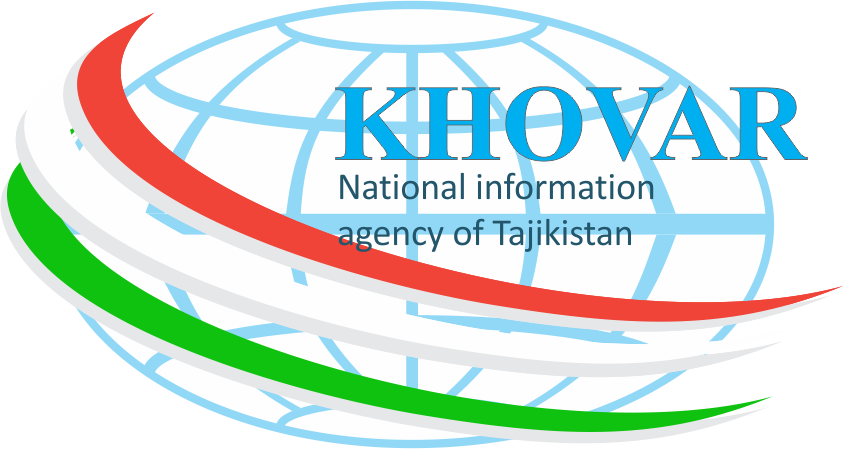
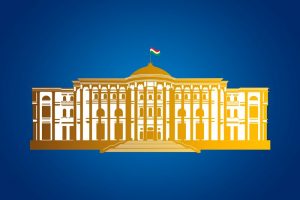 Commentary to orders of the President of the Republic of Tajikistan on the republican competitions «Tajikistan – My Dear Homeland», «Science – Dawn of Enlightenment» and «Book – Dawn of Knowledge» in 2026
Commentary to orders of the President of the Republic of Tajikistan on the republican competitions «Tajikistan – My Dear Homeland», «Science – Dawn of Enlightenment» and «Book – Dawn of Knowledge» in 2026 Emomali Rahmon, Vladimir Putin discuss strengthening strategic partnership between two countries
Emomali Rahmon, Vladimir Putin discuss strengthening strategic partnership between two countries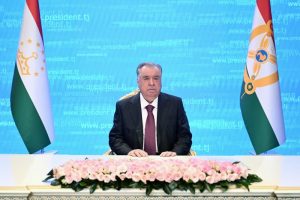 New Year Address of the President of Tajikistan to the Nation
New Year Address of the President of Tajikistan to the Nation Meeting of the Government of the Republic of Tajikistan
Meeting of the Government of the Republic of Tajikistan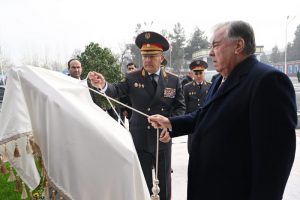 President Emomali Rahmon attended inauguration of administrative building in military unit No. 3503 of Internal Troops in Bokhtar
President Emomali Rahmon attended inauguration of administrative building in military unit No. 3503 of Internal Troops in Bokhtar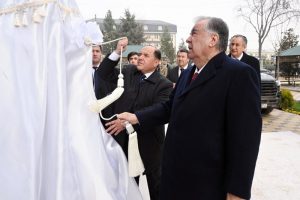 Head of state Emomali Rahmon attended inauguration of additional educational building of the Innovative Medical College in Bokhtar
Head of state Emomali Rahmon attended inauguration of additional educational building of the Innovative Medical College in Bokhtar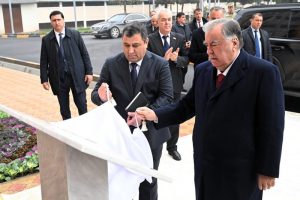 President Emomali Rahmon attended opening of Bokhtar State University’s student dormitory
President Emomali Rahmon attended opening of Bokhtar State University’s student dormitory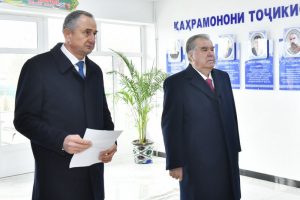 President Emomali Rahmon participated in commissioning of an educational facility and an industrial enterprise in Levakant and Vakhsh
President Emomali Rahmon participated in commissioning of an educational facility and an industrial enterprise in Levakant and Vakhsh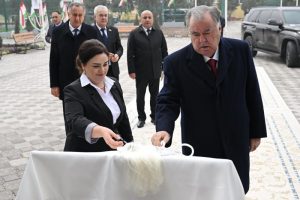 President Emomali Rahmon attended opening of secondary school No. 17 in Bokhtar
President Emomali Rahmon attended opening of secondary school No. 17 in Bokhtar President Emomali Rahmon held a meeting with orphans, gifted students, winners of republican competitions in of Bokhtar
President Emomali Rahmon held a meeting with orphans, gifted students, winners of republican competitions in of Bokhtar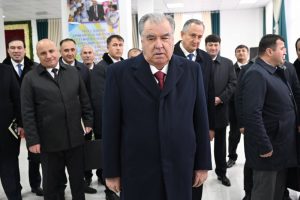 President Emomali Rahmon attended opening of Ehson charity high-rise residential building in Bokhtar
President Emomali Rahmon attended opening of Ehson charity high-rise residential building in Bokhtar









